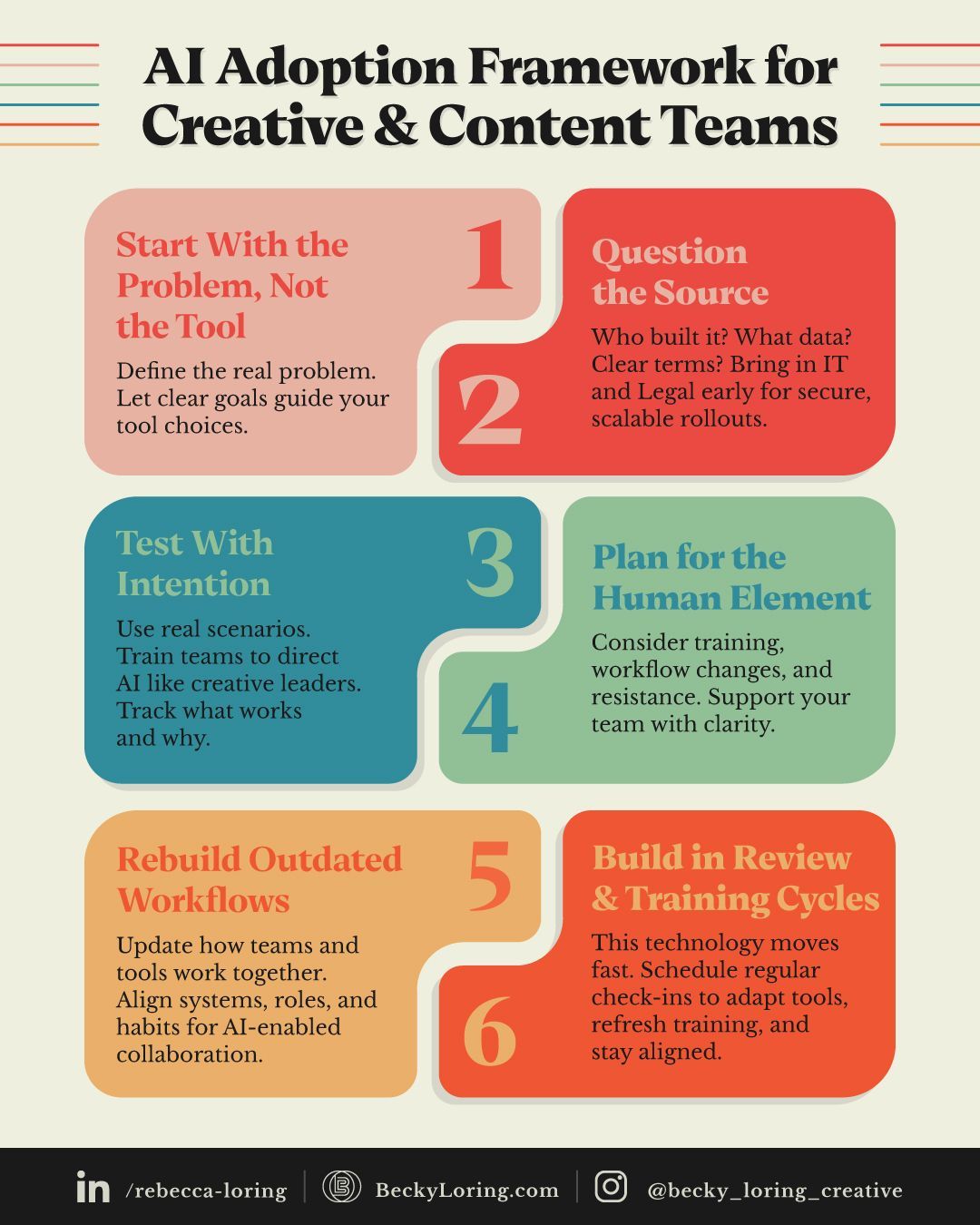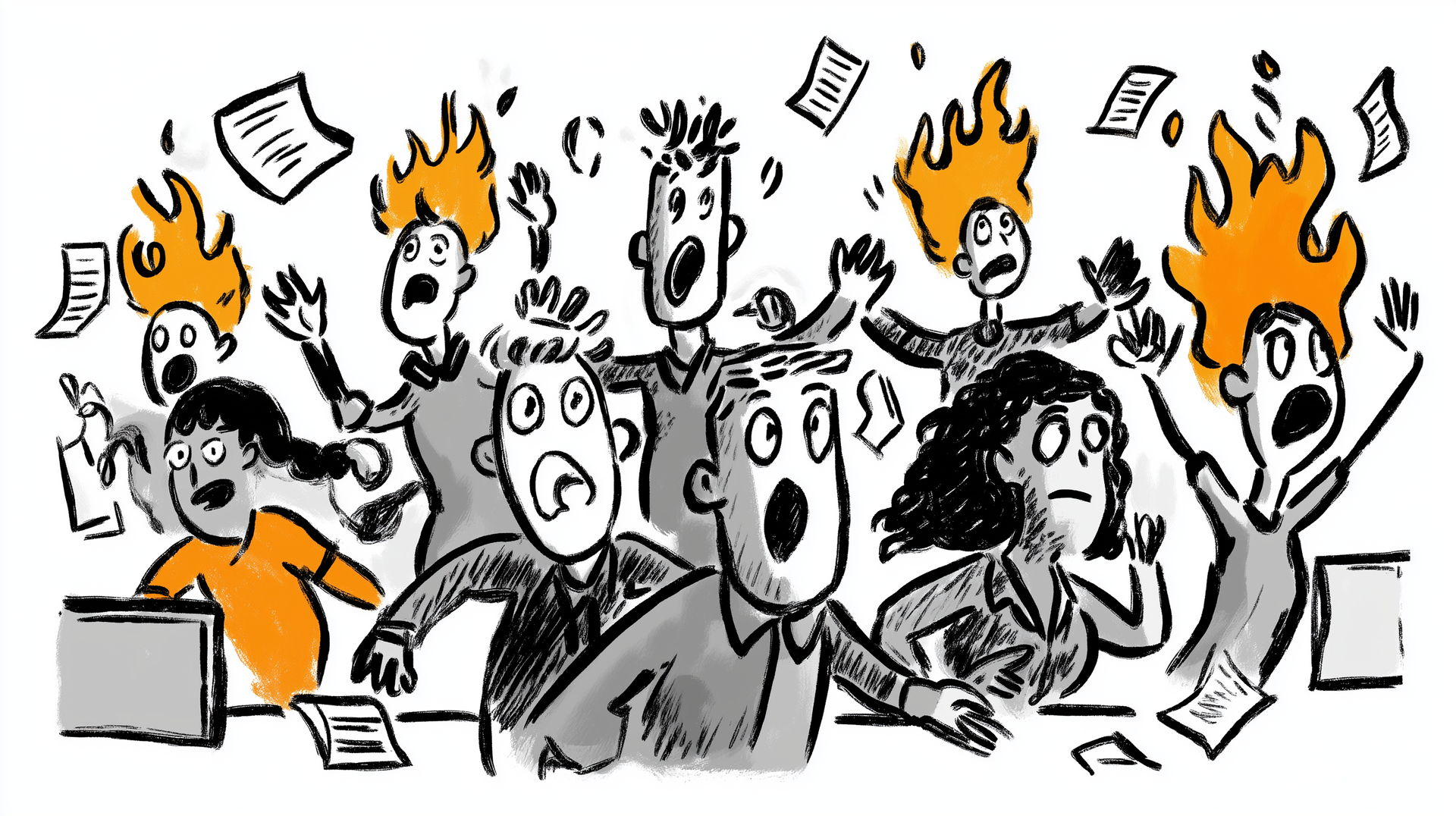The Creative Advantage No AI Tool Can Replace:
Critical Thinking
By Becky Loring
As creative leaders, we're navigating another major technological shift. Every week brings new generative AI tools, updated features, and bold claims about what’s possible. The pressure to keep up is real. But here's what I’ve observed: the teams that thrive aren't necessarily the ones racing to adopt every new tool. They're the ones that have mastered critical thinking.
When AI Reveals a Critical Thinking Gap
Under pressure to keep up, some troubling patterns have started to emerge, and headlines are quick to blame the tools.
If your team is skipping fact-checking, running with first drafts, or approving off-brand content, the problem isn’t AI. It’s a critical thinking gap that likely existed before these tools were introduced.
Generative tools are revealing where teams lack the habits, time, or support to pause, assess, and ask better questions. They’re showing us where creative work has been reduced to output, rather than guided by intent.
At the same time, they’re surfacing a second issue: the gap between what leadership expects and what content producers are resourced to deliver. Many teams are under pressure to move faster without clarity on how tools should be used or what success looks like.
These gaps aren’t caused by AI. They’re just harder to ignore now.
Critical thinking helps bridge them. It gives teams the tools to work more intentionally, and it gives leaders the insight to set better expectations.
The Power of Critical Thinking
At its core, critical thinking means taking a step back to ask better questions before moving forward. It is the practice of analyzing information, identifying risks, and evaluating decisions in context. In the age of generative AI, that means looking beyond tool features to assess fit, impact, and long-term alignment.
It shifts the conversation from “What can this tool do?” to “Does this solve a real problem for us?” Teams begin to assess how a tool fits into their workflows, what risks it introduces, and whether it supports the business goals they are responsible for delivering.
Critical thinking also supports more strategic growth. It helps avoid wasted spend, reduces tool fatigue, and creates systems that are easier to scale. When teams are equipped to think critically, they make more confident decisions, adapt faster, and collaborate more effectively across the business.
This mindset strengthens adoption, but more importantly, it builds alignment. People are more likely to engage with tools when they understand why they were chosen and how they contribute to meaningful outcomes.
AI Adoption Framework for Creative & Content Teams
Based on my experience piloting generative tools and working with cross-functional teams, I’ve developed a framework that helps teams adopt AI more intentionally. Every step is grounded in critical thinking by asking better questions before rushing to answer them.
Start With the Problem, Not the Tool
Before evaluating any AI solution, define what you're trying to solve. Are you looking to increase content velocity? Improve consistency? Reduce repetitive tasks? Get specific about the outcomes you want to achieve.
Question the Source
Not all AI tools are created equal. Who built it? What data was it trained on? What are the terms of service? Understanding the foundation helps you make informed decisions about implementation. Bring in IT and Legal early. Collaboration with these teams ensures your AI rollout is scalable, secure, and fully approved.
Test With Intention
Random experimentation rarely leads to meaningful insights. Design tests using real scenarios and train teams to direct AI like creative leaders. That means crafting clear prompts, evaluating outputs with brand and strategy in mind, and tracking what works, what doesn’t, and why.
Plan for the Human Element
Technology is only as effective as the people using it. Consider training needs, workflow changes, and areas of resistance. Make space to support your team through the transition so they can adopt the tools with clarity and confidence.
Rebuild Outdated Workflows
The goal is not to bolt AI onto broken systems. It is to rethink how your team works across disciplines and departments. That includes aligning systems, roles, and habits to support AI-enabled collaboration. When workflows reflect how your people and tools actually operate, teams can spend more time on strategy, experimentation, and high-impact execution.
Build in Review & Training Cycles
AI tools evolve quickly. What works today may not be the best fit six months from now. Build regular check-ins to assess performance, revisit training, and ensure your systems continue to align with evolving needs. Staying current requires both review and learning cycles.

Download the Summary
A one-page guide to help your team train, plan, and roll out AI adoption with clarity. Ideal for team leads, strategists, and stakeholders managing creative or content workflows.
The Value of Thoughtful Implementation
When AI adoption is driven by critical thinking, teams build systems that support real work. Efficiency improves, waste decreases, and the tools in use are more likely to match actual team needs. This approach also reduces regret. Teams avoid rushed decisions, redundant purchases, and shallow integrations that slow momentum or stretch budgets too thin. Most importantly, it builds internal clarity. Teams learn what makes a tool useful in their environment and become more equipped to evaluate future options with confidence.
Moving Forward with Intention
The pace of change will continue. Tools will evolve. The pressure to move quickly will remain. But success won't come from reacting to every new release. It will come from knowing which tools matter, how to use them well, and how to build systems that support your team over time.
Critical thinking is not a roadblock to innovation. It is the skill that makes innovation sustainable. It helps teams stay focused, make better decisions, and adapt with confidence as the landscape shifts.
The question isn't whether your team should adopt AI. It's whether you will do it with the clarity and care that lead to long-term value.



